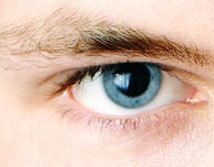Eyebrow Transplant
An eyebrow hair transplant is a cosmetic surgical procedure that restores missing eyebrow hair in both male and female patients. The procedure is relatively non-invasive and can be used to restore missing eyebrow hair for patients with either partial or full eyebrow loss.
Eyebrow Hair Loss – Reasons the Hair Loss Happens
 When it comes to loss of eyebrow hair, there are a variety of causes that can lead to this condition and they include:
When it comes to loss of eyebrow hair, there are a variety of causes that can lead to this condition and they include:
- Excessive plucking
- Scarring
- Trauma
- Eyebrow loss that is secondary/the result of some other medical condition
Lack of eyebrow hair can also result from congenital conditions or autoimmune disorders such as Cicatricial Alopecia, Alopecia Areata and lupus (among other congenital conditions or autoimmune disorders).
Injury or scarring can also result in partial or full eyebrow loss. An eyebrow transplant can help restore the lost hair and produce natural looking eyebrows in normal skin or even inside scarred areas. Although one eyebrow hair transplantation procedure is usually enough to restore the natural appearance of the eyebrow in some patients, each patient is different so some people may require more than one procedure to achieve their desired amount of eyebrow fullness.
Eyebrow hair loss may result from some psychological conditions such as trichotillomania which is the repeated and obsessive plucking of the eyebrows. It is strongly recommended that these individuals undergo a psychological consultation to treat this underlying condition before pursuing an eyebrow transplant.
Eyebrow Hair Transplant Techniques:
The hair restoration techniques performed by Parsa Mohebi Hair Restoration doctors for eyebrow hair transplants are the Follicular Unit Extraction (FUE) technique and, occasionally, the FUT strip technique. Both of these hair restoration techniques generally utilize donor hair taken from the scalp of the patient. However, eyebrow hair could be harvested from any other area of the body. This delicate procedure is started through the creation of microscopic incisions that form an adequate grip for very fine implanted eyebrow hair grafts. Our medical team takes great care to ensure that the hair has a natural angulation and curvature in order to produce the most realistic looking results.
It is important to remember that transplanted eyebrow hair grows at the same rate as the scalp hair of the patient. The transplanted eyebrow hairs need to be trimmed more often, when compared to regular eyebrow hair, in order to maintain a natural appearance. Patients may need around 300 single hair grafts or two follicular unit grafts for each eyebrow in order to achieve a reasonable density. The number of hair grafts that are needed depends on whether a partial or complete eyebrow restoration is planned. In addition, the facial composition and ethnic background of the patient can also impact the number of recommended grafts.
Eyebrow transplants are usually performed using only local anesthesia and the patient experiences minimal pain or discomfort after the procedure. Possible complications may include redness, swelling and scabbing during the first few days after the procedure. Proper maintenance of the transplanted areas, such as repeated washing of the eyebrows, can help alleviate these minor symptoms and expedite the recovery process. The patient who has received an eyebrow hair transplant will experience new hair growth in about 3 to 6 months after the surgery. Full results can be seen 6 to 8 months after their eyebrow hair transplant.